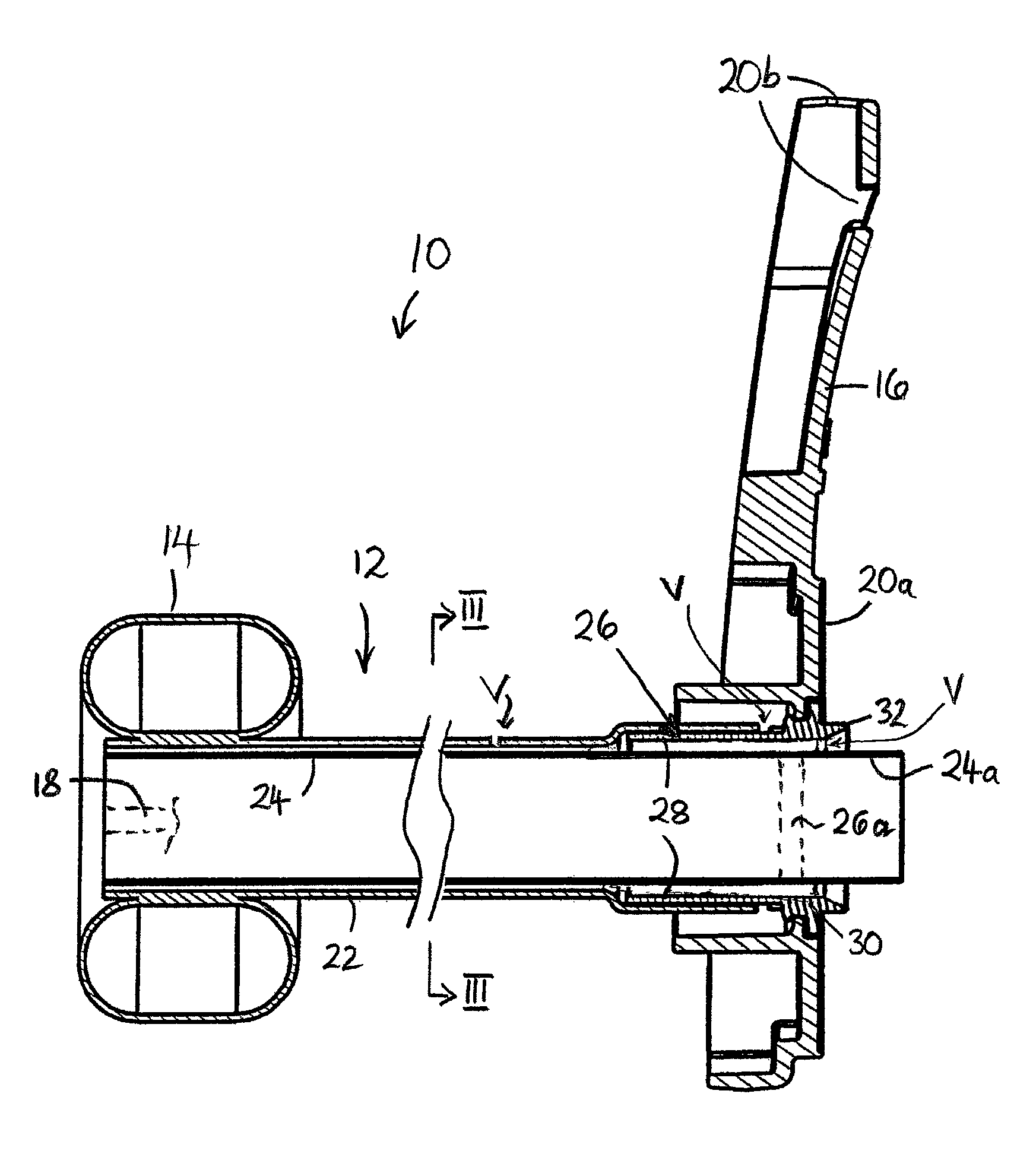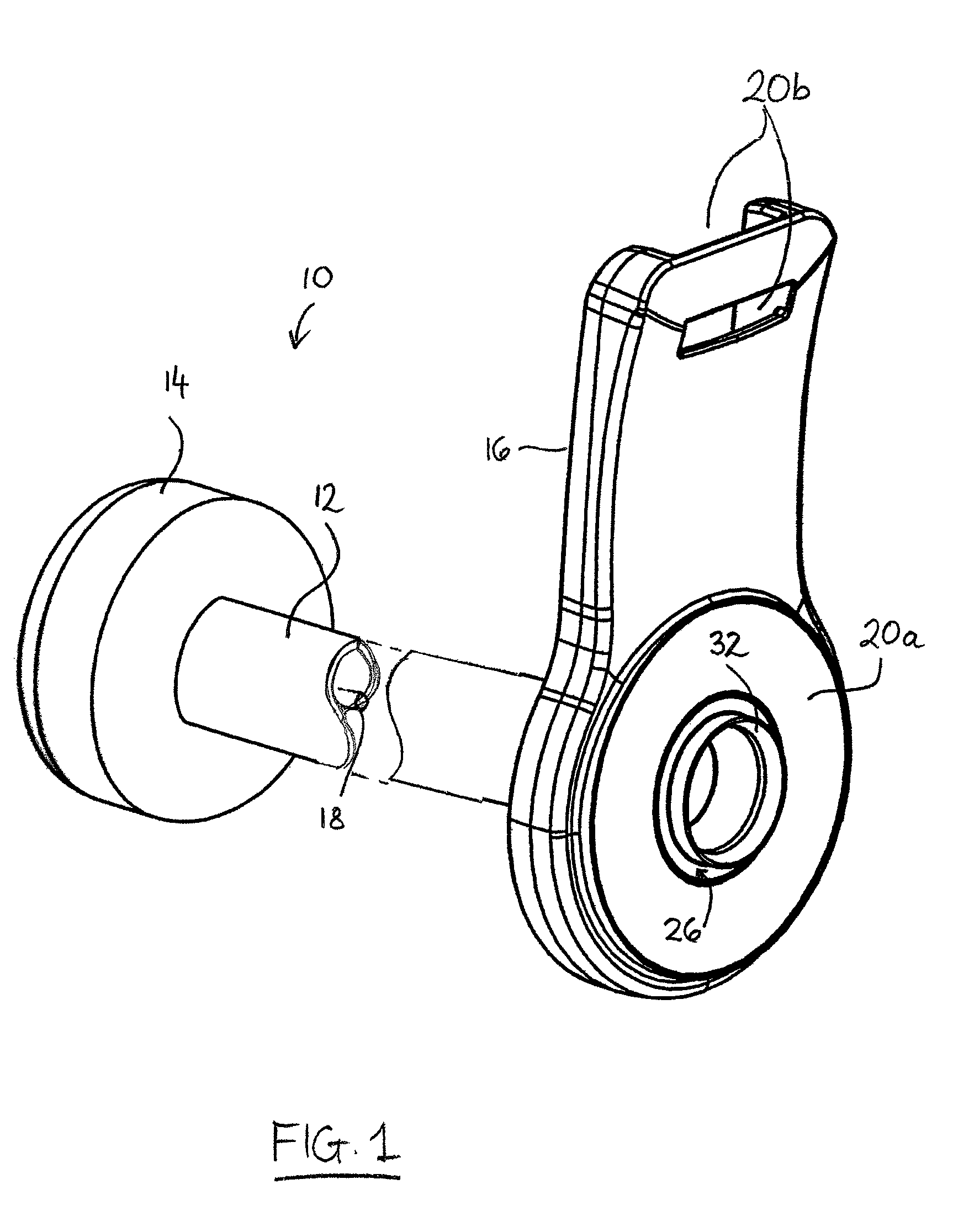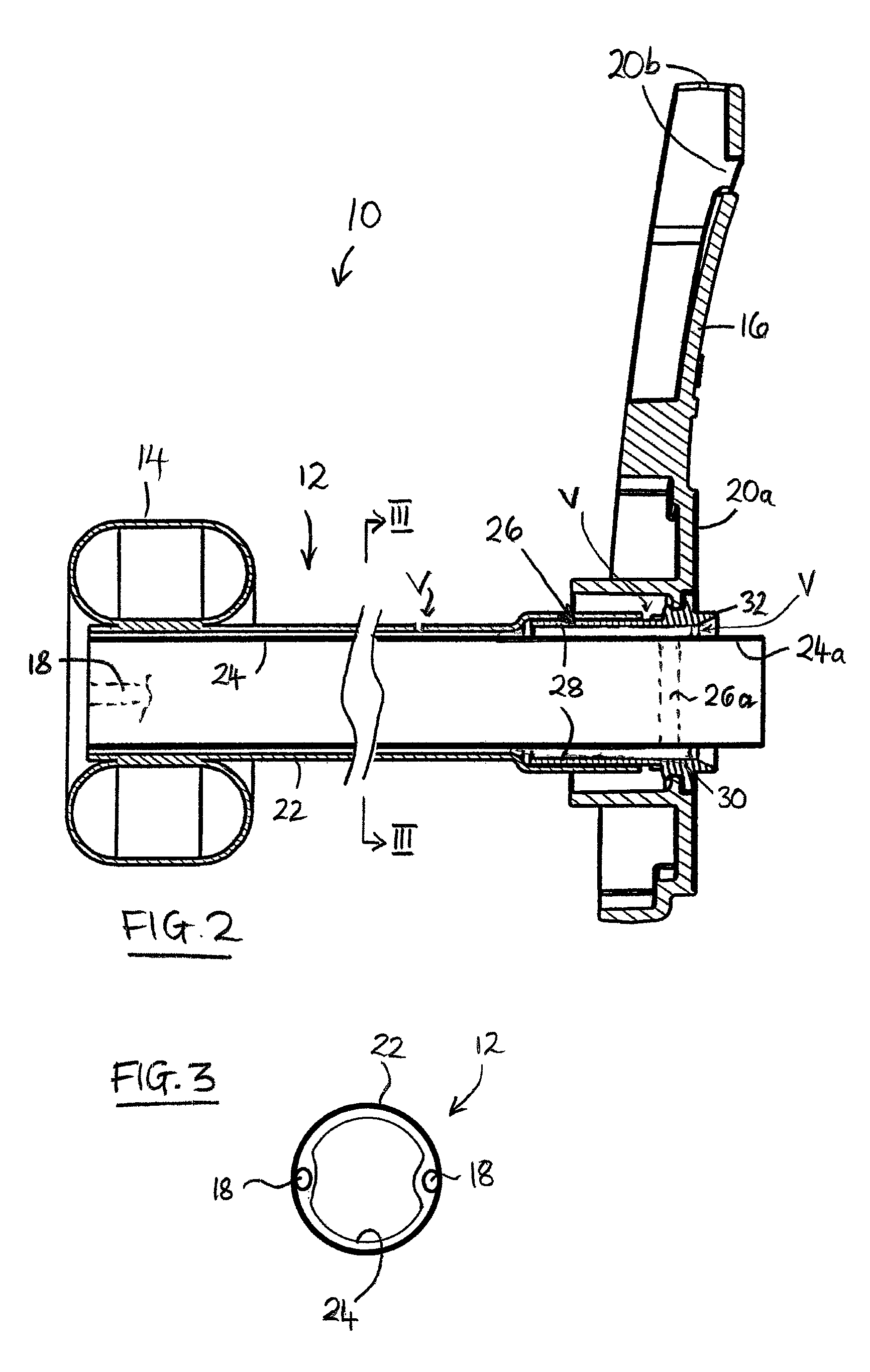Silicone based tube for transporting malodoriforous matter from the human body
a technology of malodoriferous matter and silicone based tubes, which is applied in the field of silicone based tubes for transporting malodoriferous matter from the human body, can solve the problems of malodors leaking through the material forming the tube, difficult to find an ideal single material that exhibits all of the desired characteristics, and high gas transpiration (or transmission rate) of silicone, so as to avoid complex and expensive deposition processes. , the effect of avoiding problems
- Summary
- Abstract
- Description
- Claims
- Application Information
AI Technical Summary
Benefits of technology
Problems solved by technology
Method used
Image
Examples
second embodiment
[0041]The following description describes two alternative embodiments, a first in which the second tube member (odor barrier sleeve) 24 is fitted inside the first tube member 22; and a second embodiment in which the second tube member (odor barrier sleeve) 24 is fitted outside the second tube member 22. The following table illustrates the comparative performance of both embodiments compared to a silicone tube without any odor barrier, and a silicone tube with a parylene coating, by using the so-called “Onion Test” (British Standard 7127: Part 101: 1991) in which the odor barrier properties are assessed according to whether odor from an onion when contained by the test material in a closed system can be detected by the human nose. Films were also tested for their odor barrier using oxygen transmission rate (OTR), ASTM D3985:
[0042]
Oxygen TransmissionRate (OTR), cc / m2 / dayONIONEmb.TUBE TYPEat 23° C., 90% RHTESTSilicone tube without odor40,000Very StrongbarriersmellSilicone tube with par...
first embodiment
[0046]In the first embodiment illustrated in FIGS. 2 and 3, the second tube (sleeve) member 24 is provided as an internal liner inside the first tube member 22. The second tube member 24 is fastened to the first tube member 22, for example, completely around its circumference at the distal end (i.e., patient end) and substantially along its entire length, or at least at longitudinally and / or circumferentially spaced apart positions, or at least one longitudinal position. The attachment may be by means of adhesive. The attachment serves to create a seal between the first and second tubes at the patient end and locate the second tube member 24 axially, in order to prevent the second tube member 24 from being dislodged or displaced axially, for example by passage of fecal matter within the tube 12, or if the tube 12 is milked by a caregiver to peristaltically advance fecal matter along the tube 12. The fastening may optionally support the second tube member 24 and thus keeps the tubula...
third embodiment
[0058]FIGS. 9 and 10 illustrate a third embodiment in which the tube 12 comprises a single tube member 40. Referring to FIGS. 11 and 12, the wall of the tube member 40 is a laminate comprising at least one layer 42 of silicone based material and at least one layer 44 of odor barrier material. The odor barrier material may be any of the examples described hereinbefore. As indicated in phantom, the laminate may optionally include one or more adhesive layers 46 for bonding the odor barrier material to the silicone based material. In the example shown in FIG. 11, the odor barrier layer 44 is provided at a surface portion of the tubing 40. The surface portion may be at the radially outer surface, or the radially inner surface. In the example shown in FIG. 12, the odor barrier layer 44 is sandwiched in the middle of inner and outer layers 42 of silicone based material. The layers 42 of silicone material on either side of the odor barrier layer 44 may be of about the same thickness, one la...
PUM
| Property | Measurement | Unit |
|---|---|---|
| thickness | aaaaa | aaaaa |
| length | aaaaa | aaaaa |
| wall thickness | aaaaa | aaaaa |
Abstract
Description
Claims
Application Information
 Login to View More
Login to View More - R&D
- Intellectual Property
- Life Sciences
- Materials
- Tech Scout
- Unparalleled Data Quality
- Higher Quality Content
- 60% Fewer Hallucinations
Browse by: Latest US Patents, China's latest patents, Technical Efficacy Thesaurus, Application Domain, Technology Topic, Popular Technical Reports.
© 2025 PatSnap. All rights reserved.Legal|Privacy policy|Modern Slavery Act Transparency Statement|Sitemap|About US| Contact US: help@patsnap.com



